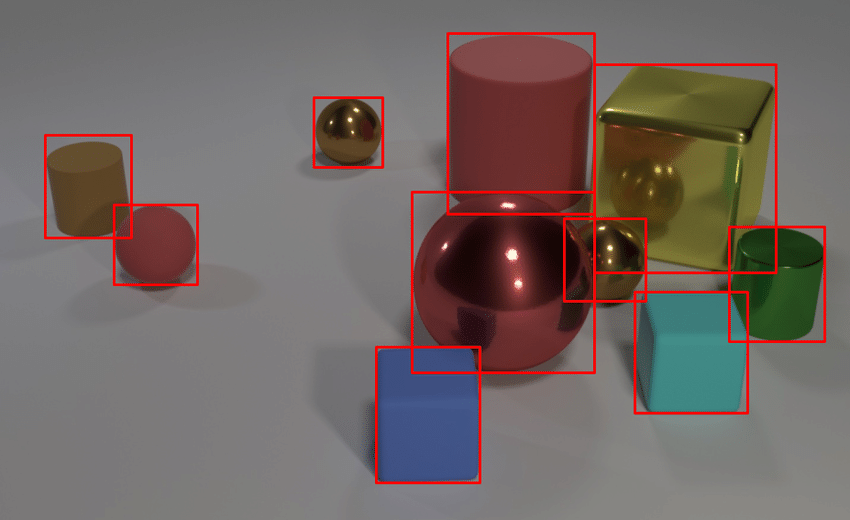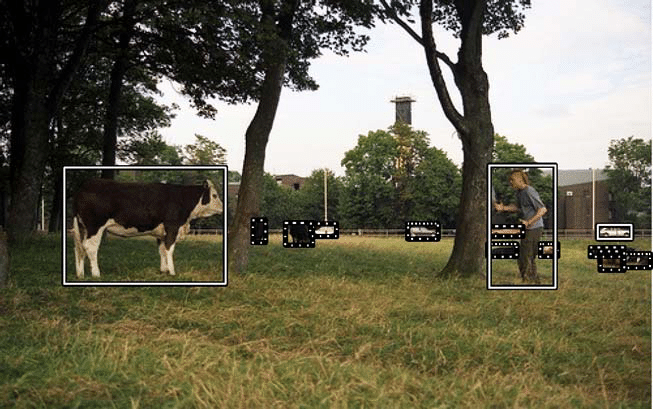Best Practices To Improve ML Accuracy

Image labeling is an essential step in training ML algorithms for computer vision projects, as it helps the algorithm identify objects in an image.
Labels are used to train the algorithm to recognize features in the image, such as colors, shapes, subjects,s and objects. The labels can also be used to identify relationships between different objects in the image.
Additionally, it is important to use accurate labels in order to ensure that the algorithm is trained correctly and is able to accurately identify objects in unseen images.
Let’s explore some of the best practices for image labeling and the importance of image labeling in model training.
How Adopting The Best Practices For Image Labelling Will Improve Ml Algorithms?
Here are some of the best practices for labeling images that will greatly enhance machine learning (ML) algorithms in a number of ways.
1. Enhanced Data Quality
Image Labelling ensures accurate and consistent annotation of training data for ML systems. For model training, high-quality labels offer the right ground truth, which improves algorithm performance.
2. Better Generalisation
ML systems learn from labeled data to make assumptions about cases they have never seen before. An algorithm's ability to generalize successfully to new, unlabeled data depends on how well it can recognize key patterns and features in properly labeled images. The training set's bias and noise are reduced by consistent and precise labeling, which improves the algorithm's ability to generalize.
3. Improved Algorithm Robustness
Effective image labeling enables algorithms to manage a wide range of challenging real-world conditions. The algorithm can learn to recognize a wider variety of objects, features, or connections by giving thorough annotations and recording important details. When used in real-world situations, this increases the ML algorithm's resilience and dependability.
4. Reduced Annotation Bias
One of the best practices for labeling images is to reduce annotation bias, which is the term for systematic mistakes or discrepancies in labeling brought on by subjective assessments. Annotation bias can be reduced by adhering to strict criteria, utilizing several annotators, and carrying out frequent quality checks. This results in ML algorithms that are more trustworthy and fair.
5. Facilitated Transfer Learning
Hierarchical labels and fine-grained annotations in image labeling can successfully use transfer learning. Using labeled data, pre-trained models can be adjusted for use in certain tasks or domains, saving time and computing resources. Proper labeling makes it easier to transfer information and adapt current models to new tasks or domains.
6. Improved Efficiency
ML algorithms can be made much more effective by implementing best practices in picture labeling, such as utilizing automation strategies, semi-supervised learning, or active learning. Large-scale datasets can be handled more rapidly by automated or semi-automatic labeling methods, which cuts down on the time and expense needed for annotation.
7. Accelerated Iterative Development
In ML, iterating between training models, assessing performance, and improving the labeling procedure are frequently included in the development process. This iterative cycle is streamlined by adhering to best practices for image labeling. It enables developers to focus on particular labeling difficulties, enhance the caliber of training data, and iterate more effectively, hastening the creation and use of algorithms.
In general, using best practices for image labeling aids in producing training datasets that are excellent, trustworthy, and consistent. In turn, this enhances the generalization, resilience, and performance of ML algorithms, allowing them to produce more accurate results and effective solutions across a range of applications.
Some of the Best practices for Image Labelling to improve ML Algorithms
Here are some best practices to follow when performing data labeling in computer vision projects:
Define the Area of Each Object Precisely
Use tight bounding boxes or polygons for accurate object coordinates. Avoid bounding boxes for diagonal objects as it considers the background around the object in the object itself. As with the overlapping objects, diagonal objects are best annotated using polygons and instance segmentation instead.
Handle Uncertainty and Ambiguity

Images or videos may contain uncertain cases that are challenging to annotate. Communicate all such cases to annotators. Establish a feedback loop for addressing questions or ambiguities. Consistent handling of uncertainties is essential for ensuring accurate labeling.
Update and Review Guidelines

Computer vision project requirements may change over time dynamically. Therefore, it's important to evaluate and improve the annotation guidelines to ensure maximum efficiency and productivity benefits. This may include analyzing model performance, collecting feedback from annotators, and challenges faced by clients
Optimize the Annotation Workflow

Establish a system for measuring and monitoring the number of tasks finished, the time it takes to complete tasks, and the number of mistakes or exceptions. It's essential to optimize your annotation workflow and address any issues or questions that may arise during the process.
Data Security

Use appropriate security based on the type and sensitivity of data being stored. Take suitable security measures to protect against unauthorized access, alteration, disclosure, or destruction of the data. Follow best practices for data protection, including data encryption, access controls, and anonymization, as appropriate.
Why is Image Labeling Important in computer vision and AI?
Image labeling is an essential task in computer vision and artificial intelligence (AI), which entails annotating or labeling a picture with labels or tags that are descriptive. It is crucial because it helps machines to comprehend and interpret an image's contents, allowing them to take decisions or perform actions depending on the information they have retrieved.
Several practical implications support the significance of image labeling in computer vision and AI tasks, as follows:
1. Object Detection

Machines can recognize and identify things in an image with the aid of image labeling. The system can comprehend the image's data and categorize the objects according to their category by labeling the many objects that are present in the image.
2. Image Retrieval

Labeling images makes it simpler for computers to find pictures that are comparable to or associated with a certain scene or object. For instance, a search engine can utilize image labeling to find all pictures of a particular scene or object.
3. Image Segmentation

Image segmentation, which is the process of splitting an image into various segments or areas, also requires picture labeling. Machines can distinguish between distinct parts of a picture by labeling each segment with a descriptive tag.
4. Object Tracking
![]()
Image labeling can also be used for object tracking, which is the process of following an object's movement via a series of pictures or video frames. Machines can follow the movement of each object in the sequence and forecast their position by labeling each one.
Apart from the practical implementation, here are some reasons why Image Labeling is important.
1. Understanding of real-world environments and conditions
Image labeling is important in computer vision and AI because it allows computers to gain information on important factors from digital images or videos.
Labeling images accurately allows computer vision algorithms to detect and classify objects, people, and other segments in images or videos.
2. Quick decisions
By seeing the results from annotating images, the top decision-makers in the company can identify the context of the projects. They can make decisions and predictions about what actions to take based on the understanding found in the images.
3. Developing accurate ML models
Training data with labels in images and videos help the ML models to identify patterns until they can recognize objects on their own.
Conclusion
In conclusion, to maximize the benefits of image labeling, it is important to use tight bounding boxes to precisely define the area of each object within the images or videos, to tag any occluded objects within the image, to maintain consistency across images by ensuring that labels are consistently used, and to ensure that your dataset is balanced.
By following these best practices, you can ensure that your computer vision projects are able to achieve accurate results.
FAQs
- Why is accurate image labeling crucial for machine learning algorithms?
Accurate image labeling enables that machine learning (ML) algorithms to learn from accurate and consistent annotations, improving algorithm performance and enabling greater generalization to unobserved data.
2. How can image labeling increase the reliability of algorithms?
By collecting pertinent features and enhancing the algorithm's capacity to recognize a wider variety of objects or connections, accurate image labeling aids ML algorithms in managing a variety of complicated circumstances.
3. What is annotation bias, and why should it be considered during image labeling?
Annotation bias describes systematically occurring mistakes or discrepancies in labeling brought on by subjective assessments. By addressing annotation bias through best practices, ML algorithms are made to be more fair and trustworthy.
4. How can image labeling encourage the transmission of knowledge?
Effective transfer learning is made possible by image labeling using hierarchical labels and fine-grained annotations. Labeled data can be used to fine-tune pre-trained models on certain tasks or domains, saving time and resources.
5. How can image labeling increase ML algorithm efficiency?
Image labeling improves the effectiveness of ML algorithms, cutting down on time and expense, by utilizing automation approaches, semi-supervised learning, or active learning.

Simplify Your Data Annotation Workflow With Proven Strategies
.png)


